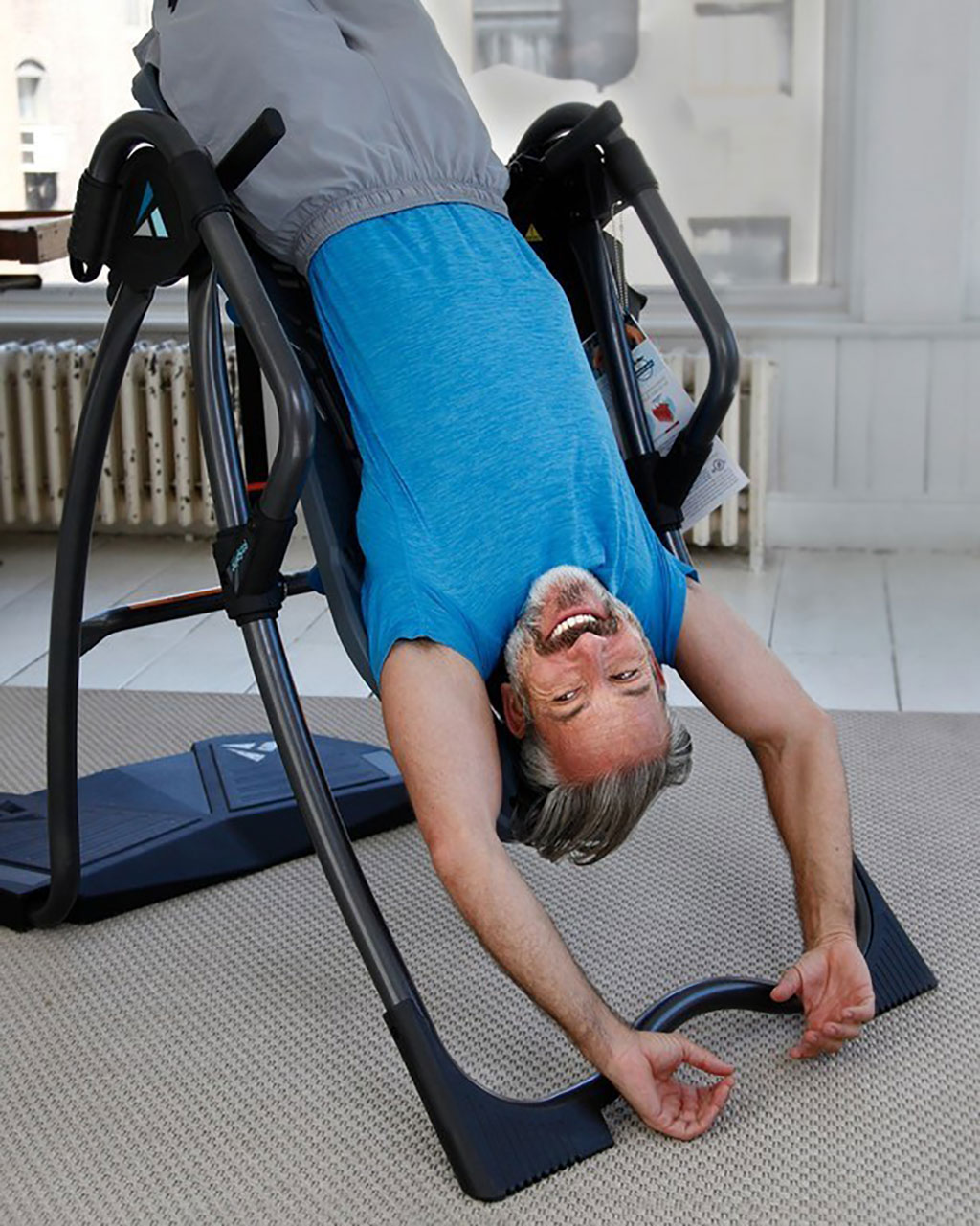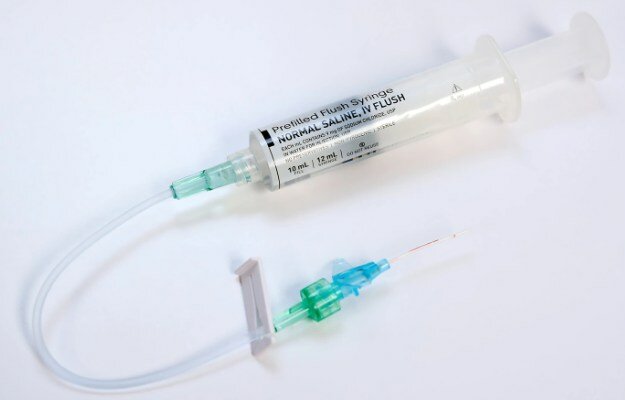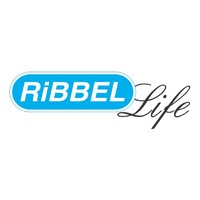Inversion Therapy Relieves Symptomatic Sciatica Pain 
|
By HospiMedica International staff writers Posted on 13 Dec 2021 |

Image: Inversion Tables can help reduce the need for back surgery by 50% (Photo courtesy of Teeter)
Inversion tables can alleviate pain and symptoms in sciatica patients so that they may avoid surgery altogether, according to a new study.
Researchers at Newcastle University (United Kingdom), the Royal Victoria Infirmary (Newcastle upon Tyne; United Kingdom), and other institutions conducted a study that compared surgery rates following inversion therapy in 85 participants with sciatica and lumbar disc disease, who acted as their own control for the symptomatic part of the study. Inversion therapy was provided via a Teeter (Bonney Lake, WA, USA) inversion table.
The resulted showed that inversion therapy relieved pain symptoms compared with pre-treatment status, on a visual analog scale (VAS) score (by 74%), and on the Roland Morris and the Oswestry Disease indices (by 69% and 75%, respectively); 39% also reported that they eliminated the use of pain medication. In addition, two year surgery rate in the inversion participants in the registry (21%) was significantly lower than in the control group (39% at two years, and 43% at four years). The study was published in November 2021 issue of the Journal of Physical Therapy Science.
“The forces that gravity exerts during inversion in patients with lumbar disc protrusions relieved their symptoms and avoided the need for surgery,” concluded lead author Alexander Mendelow, MD, of Newcastle University, and colleagues. “Also, in the inverted patients, their symptoms were significantly less severe than they were before the inversion therapy. Our study makes a strong case for setting up a large prospective randomized controlled trial of inversion therapy for these patients.”
Teeter offers three models of inversion tables for people living with back pain due to sciatica, facet syndrome, and muscle spasms, among other conditions. The table allows a person to hang upside down while resting their back, releasing spinal compression, relieving disk and joint pain, as well as reducing the intensity of back spasms.
Related Links:
Newcastle University
Royal Victoria Infirmary
Teeter
Researchers at Newcastle University (United Kingdom), the Royal Victoria Infirmary (Newcastle upon Tyne; United Kingdom), and other institutions conducted a study that compared surgery rates following inversion therapy in 85 participants with sciatica and lumbar disc disease, who acted as their own control for the symptomatic part of the study. Inversion therapy was provided via a Teeter (Bonney Lake, WA, USA) inversion table.
The resulted showed that inversion therapy relieved pain symptoms compared with pre-treatment status, on a visual analog scale (VAS) score (by 74%), and on the Roland Morris and the Oswestry Disease indices (by 69% and 75%, respectively); 39% also reported that they eliminated the use of pain medication. In addition, two year surgery rate in the inversion participants in the registry (21%) was significantly lower than in the control group (39% at two years, and 43% at four years). The study was published in November 2021 issue of the Journal of Physical Therapy Science.
“The forces that gravity exerts during inversion in patients with lumbar disc protrusions relieved their symptoms and avoided the need for surgery,” concluded lead author Alexander Mendelow, MD, of Newcastle University, and colleagues. “Also, in the inverted patients, their symptoms were significantly less severe than they were before the inversion therapy. Our study makes a strong case for setting up a large prospective randomized controlled trial of inversion therapy for these patients.”
Teeter offers three models of inversion tables for people living with back pain due to sciatica, facet syndrome, and muscle spasms, among other conditions. The table allows a person to hang upside down while resting their back, releasing spinal compression, relieving disk and joint pain, as well as reducing the intensity of back spasms.
Related Links:
Newcastle University
Royal Victoria Infirmary
Teeter
Latest Patient Care News
- Revolutionary Automatic IV-Line Flushing Device to Enhance Infusion Care
- VR Training Tool Combats Contamination of Portable Medical Equipment
- Portable Biosensor Platform to Reduce Hospital-Acquired Infections
- First-Of-Its-Kind Portable Germicidal Light Technology Disinfects High-Touch Clinical Surfaces in Seconds
- Surgical Capacity Optimization Solution Helps Hospitals Boost OR Utilization

- Game-Changing Innovation in Surgical Instrument Sterilization Significantly Improves OR Throughput
- Next Gen ICU Bed to Help Address Complex Critical Care Needs
- Groundbreaking AI-Powered UV-C Disinfection Technology Redefines Infection Control Landscape
- Clean Hospitals Can Reduce Antibiotic Resistance, Save Lives
- Smart Hospital Beds Improve Accuracy of Medical Diagnosis
- New Fast Endoscope Drying System Improves Productivity and Traceability
- World’s First Automated Endoscope Cleaner Fights Antimicrobial Resistance
- Portable High-Capacity Digital Stretcher Scales Provide Precision Weighing for Patients in ER
- Portable Clinical Scale with Remote Indicator Allows for Flexible Patient Weighing Use
- Innovative and Highly Customizable Medical Carts Offer Unlimited Configuration Possibilities
- Biomolecular Wound Healing Film Adheres to Sensitive Tissue and Releases Active Ingredients
Channels
Critical Care
view channel
CPR Guidelines Updated for Pediatric and Neonatal Emergency Care and Resuscitation
Cardiac arrest in infants and children remains a leading cause of pediatric emergencies, with more than 7,000 out-of-hospital and 20,000 in-hospital cardiac arrests occurring annually in the United States.... Read more
Ingestible Capsule Monitors Intestinal Inflammation
Acute mesenteric ischemia—a life-threatening condition caused by blocked blood flow to the intestines—remains difficult to diagnose early because its symptoms often mimic common digestive problems.... Read more
Wireless Implantable Sensor Enables Continuous Endoleak Monitoring
Endovascular aneurysm repair (EVAR) is a life-saving, minimally invasive treatment for abdominal aortic aneurysms—balloon-like bulges in the aorta that can rupture with fatal consequences.... Read more
Wearable Patch for Early Skin Cancer Detection to Reduce Unnecessary Biopsies
Skin cancer remains one of the most dangerous and common cancers worldwide, with early detection crucial for improving survival rates. Traditional diagnostic methods—visual inspections, imaging, and biopsies—can... Read moreSurgical Techniques
view channel
Robotic Assistant Delivers Ultra-Precision Injections with Rapid Setup Times
Age-related macular degeneration (AMD) is a leading cause of blindness worldwide, affecting nearly 200 million people, a figure expected to rise to 280 million by 2040. Current treatment involves doctors... Read more
Minimally Invasive Endoscopic Surgery Improves Severe Stroke Outcomes
Intracerebral hemorrhage, a type of stroke caused by bleeding deep within the brain, remains one of the most challenging neurological emergencies to treat. Accounting for about 15% of all strokes, it carries... Read moreHealth IT
view channel
Printable Molecule-Selective Nanoparticles Enable Mass Production of Wearable Biosensors
The future of medicine is likely to focus on the personalization of healthcare—understanding exactly what an individual requires and delivering the appropriate combination of nutrients, metabolites, and... Read moreBusiness
view channel
Philips and Masimo Partner to Advance Patient Monitoring Measurement Technologies
Royal Philips (Amsterdam, Netherlands) and Masimo (Irvine, California, USA) have renewed their multi-year strategic collaboration, combining Philips’ expertise in patient monitoring with Masimo’s noninvasive... Read more
B. Braun Acquires Digital Microsurgery Company True Digital Surgery
The high-end microsurgery market in neurosurgery, spine, and ENT is undergoing a significant transformation. Traditional analog microscopes are giving way to digital exoscopes, which provide improved visualization,... Read more
CMEF 2025 to Promote Holistic and High-Quality Development of Medical and Health Industry
The 92nd China International Medical Equipment Fair (CMEF 2025) Autumn Exhibition is scheduled to be held from September 26 to 29 at the China Import and Export Fair Complex (Canton Fair Complex) in Guangzhou.... Read more














